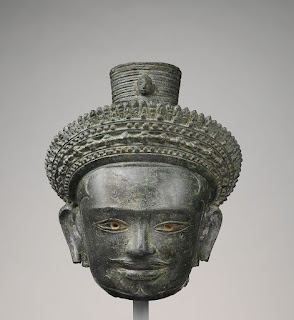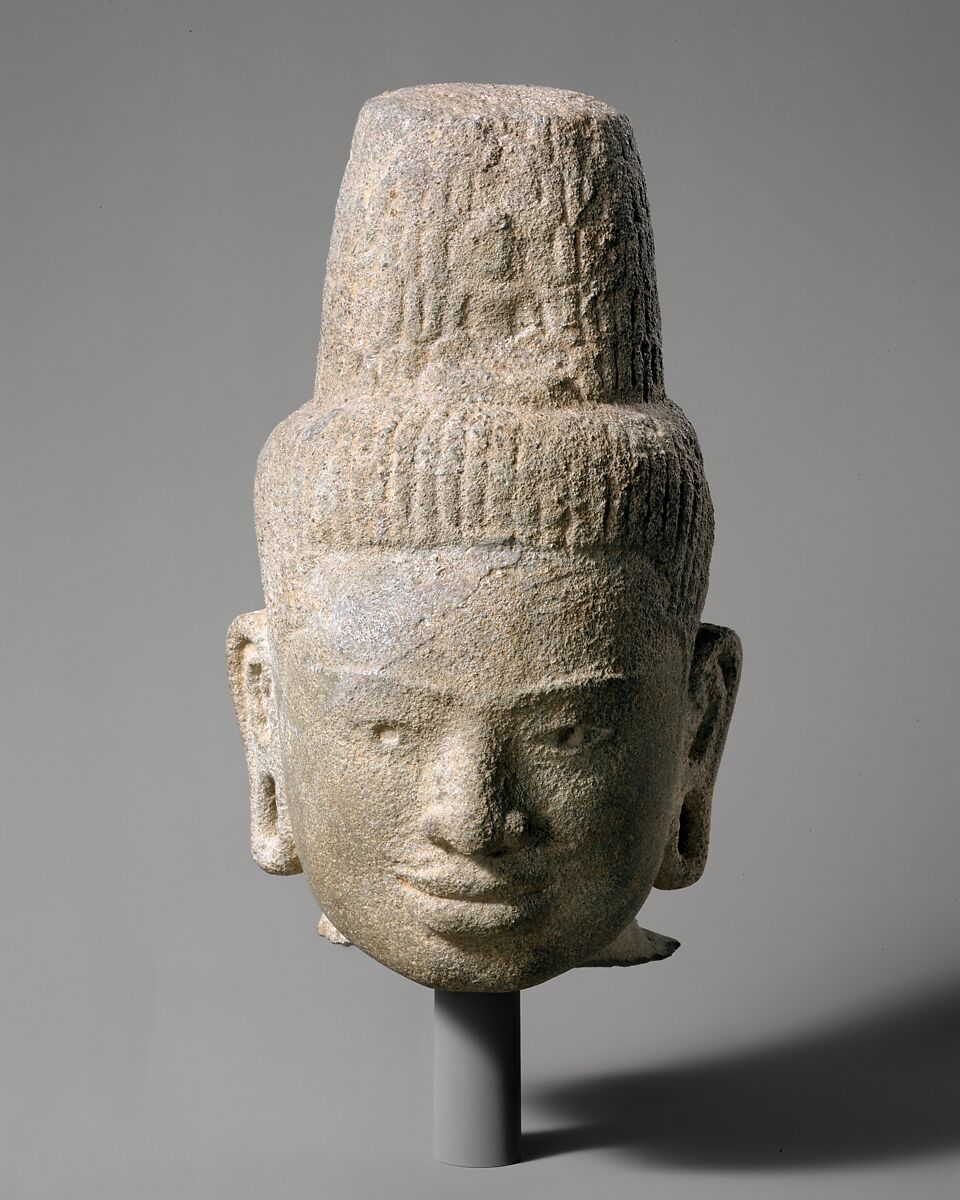 Cambodia,Douglas Latchford,Homeland Security Investigations,illicit antiquities,illicit trade in antiquities,Manhattan District Attorney,Nancy Wiener,New York,Thailand,The Metropolitan Museum of Art
Cambodia,Douglas Latchford,Homeland Security Investigations,illicit antiquities,illicit trade in antiquities,Manhattan District Attorney,Nancy Wiener,New York,Thailand,The Metropolitan Museum of Art
 No comments
No comments
Lost Time, Found Art: The Decade-Long Pursuit of Restitution for Antiquities Smuggled by Douglas Latchford at the Metropolitan Museum of Art
In 2013 the Metropolitan Museum of Art restituted two,10th-century, Koh Ker stone statues, known as the “Kneeling Attendants” to Cambodia. These artefacts had been donated in separate stages to the Museum in the late 1980s and early 1990s and had been associated with antiquities collector-dealer-trafficker Douglas Latchford, a/k/a “Pakpong Kriangsak”, who for 50 years, was once considered one of the world’s leading authorities on Asian Art before his unmasking.
As early as 2012, Bangkok-based Latchford had already been identified in a civil lawsuit, as a middleman in the trafficking of looted Khmer sculptures from “an organized looting network” and was said to have conspired with the London auction house Spink & Son Ltd., to launder looted temple antiquities.
 |
| Douglas Latchford's Facebook photo on 28 October 2017, two years before he was indicted. |
In 2019 charges were filed in the United States against the then 88 year old Latchford by Assistant U.S. Attorney Jessica Feinstein, in the Office’s Money Laundering and Transnational Criminal Enterprises Unit, for his purported role in "wire fraud, smuggling, conspiracy and related charges pertaining to his trafficking in stolen and looted Cambodian antiquities." Many of the suspect objects mentioned in his 25 page indictment passed through his hands en route to the Met and other important collections, during the course of his business operations. Latchford died on 2 August 2020 before he could be extradited to the United States and his indictment was formally dismissed, due to his death, the following month.
Last Friday, the United States authorities announced that the Met would be returning fourteen more pieces to Cambodia, dating from the ninth to the 14th centuries, plus an additional artefacts to Thailand.
The pieces going home to Cambodia are:
This 7th century CE pre-Angkor period sandstone Head of a Buddha, which was purportedly with implicated New York dealer Doris Wiener from 1984–2005 until she gifted it to the Metropolitan Museum of Art in 2005, upon which it was given Accession Number: 2005.512.
This 10th - 11th century CE copper Bodhisattva Avalokiteshvara Seated in Royal Ease. It was given Accession Number: 1992.336 when it was purchased directly from Douglas Latchford using funds from the Annenberg Foundation Gift.
This 10th century sandstone Standing Female Deity, which was given Accession Number: 2003.605. This artefact was purportedly with Doris Wiener from 1998 through 2003. Various saved accession record dates show it was either donated to the Metropolitan by Doris Wiener, in honour of Martin Lerner or was purchased through this New York dealer.
This partially fragmented 930 - 960 CE bronze Face from a Male Deity, came to the museum via a Latchford donation in honour of Martin Lerner. It was given Accession Number: 1998.320a–f.
This 10th century, Angkor period bronze Head of Avalokiteshvara, the Bodhisattva of Infinite Compassion was in circulation with Spink & Son Ltd., London until 1998, when it was then sold to an undisclosed private collector who donated the artefact to the Metropolitan the same year, and was given Accession Number: 1998.322.
.jpeg) |
This 11th century, Angkor period, bronze Four-Armed Avalokiteshvara (Bodhisattva of Infinite Compassion) This bodhisattva is often depicted with multiple heads and arms symbolising his limitless capacity to help alleviate grievances and is venerated as the ideal of karuna, the willingness to bear the pain of others. Given Accession Number: 1999.262, the statue was directly purchased by the museum from Douglas Latchford via funds from Friends of Asian Art Gifts, Cynthia Hazen Polsky Gift, and Josephine L. Berger-Nadler and Dr. M. Leon Canick Gift.
This 11th century architectural Lintel with Shiva on Nandi, Accession Number: 1996.473. This doorway topping was previously purchased in 1993 by Steven M. Kossak, owner of the prominent "Kronos Collections", who then loaned the piece to the Met for three years before eventually donating it to the museum in 1996.This late 9th century, stone Angkor period, Khmer style of Bakong, Headless Female Figure, Accession Number: 2003.592.1, is said to have been in the possession of Latchford's friend, Alexander Götz. Originally living in Bali, then for a time in Germany, Götz and his family moved to London in 1990 where he opened a gallery specialising in Southeast Asian art, with Indonesia as the main focus. He closed his London gallery in 2015 and has since moved back to Indonesia.
This late 12th century, stone Angkor period, Standing Eight-Armed Avalokiteshvara, the Bodhisattva of Infinite Compassion. Given Accession Number: 2002.477, this stature was sold by Douglas Latchford to Jeffrey B. Soref, heir to the Master Lock fortune, who sits on the Board of Directors at the Metropolitan. Soref in turn loaned his purchase to the Met from 1999–2002 before gifting it to the museum in 2002. Authorities in Cambodia had received information from a reformed looter named Toek Tik, who admitted to personally stealing this, as well as other artworks from Cambodia over a span of 20 years during his time as a smuggler.
This 7th–8th century, bronze pre-Angkor period, Ardhanarishvara (Composite of Shiva and Parvati), depicts the god as half male and half female representing the Shakta as worshipper and Shakti as devotee relationship which gives the Ardhanarishvara male and female characteristics. Assigned Accession Number: 1993.387.4 the female side of this sculpture depicts Parvati’s elegant hairstyle and flowing skirt and exposed breast, while the male side gives us half of Shiva’s moustache, as well as his third eye. Originally, the public accession record listed only the donation of this object as coming from Enid A. Haup (who had purchased and donated another problematic piece). The more recent the Met's record was updated to state that the statue was sold by Spink & Son Ltd., London to Haupt who gifted it to the Met in 1993.
This 9th century, stone Angkor period depicting the Head of Bodhisattva Avalokiteshvara. Given Accession Number: 1997.434.1, it was previously owned by American pipeline billionaire George Lyle Lindemann, a collector who frequently bought Khmer artefacts from individuals, some of whom were later implicated in the trade and trafficking of Cambodia's cultural heritage. Lindemann gifted the object to the Met in 1997, who listed the object with no prior provenance, aside from the name of the wealthy donor.
The Artefacts Returning to Thailand are:
This 11th century bronze inlayed with silver and traces of gold statue of a Kneeling Female Figure, perhaps a Khmer queen, who kneels in a posture of adoration with arms raised above her head and palms pressed together. Given Accession Number: 1972.147, she was sold to the museum by Doris Wiener.
"Every one of the 1.5 million objects in our collection has a unique history, and part of the Museum’s mission is to tell these stories. When, how, and where was it created? Who made it and why? What was going on at that time and place in history? The Met also examines the ownership history or provenance: where has the object been and in whose care?"































